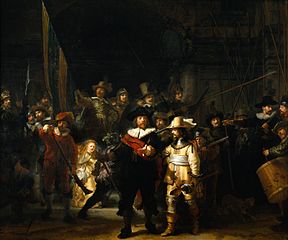 Each day, thousands of illegal immigrants are smuggled across the border. They are shoved into gas tanks, squeezed into cargo boxes, and hidden in the backs of trucks.They are pressed into small boats by the hundreds just to be sunk off the coast. News coverage has made us all painfully aware of what Syrian refugees go through in order to enter Europe. Yet with all the focus of the Syrian refugees fleeing the Middle East, why haven’t we asked ourselves what happens to those who stay behind? In his article “Photo Exhibition Puts Syrian Refugees on the Seine,” Elian Peltier features Reza Deghati who seeks to answer this question by creating a photo exhibition right on the banks of the Seine River.
Each day, thousands of illegal immigrants are smuggled across the border. They are shoved into gas tanks, squeezed into cargo boxes, and hidden in the backs of trucks.They are pressed into small boats by the hundreds just to be sunk off the coast. News coverage has made us all painfully aware of what Syrian refugees go through in order to enter Europe. Yet with all the focus of the Syrian refugees fleeing the Middle East, why haven’t we asked ourselves what happens to those who stay behind? In his article “Photo Exhibition Puts Syrian Refugees on the Seine,” Elian Peltier features Reza Deghati who seeks to answer this question by creating a photo exhibition right on the banks of the Seine River.
Before we look at Reza’s work, we must first understand what is happening in  Syria. In 2011, a series of reform movements and protests spread across the Middle East including Syria. Feeling threatened by the movement’s demands, Syria’s president Bashar al-Assad responded by attacking the protesters. He ordered their kidnappings, tortures, and murders in addition to destroying the suburbs in which they lived. In wake of this totalitarian atrocity, militant rebel groups were formed, aiming to establish a more moderate government. Syria erupted into a full blown civil war. In the midst of the internal fighting, ISIS entered Syria in search of territory and has been fighting both the rebel and government forces ever since. Surrounded by three opposing fronts in a war that has been going on for over four years now, Syrian civilians have no choice but to flee the country.
Syria. In 2011, a series of reform movements and protests spread across the Middle East including Syria. Feeling threatened by the movement’s demands, Syria’s president Bashar al-Assad responded by attacking the protesters. He ordered their kidnappings, tortures, and murders in addition to destroying the suburbs in which they lived. In wake of this totalitarian atrocity, militant rebel groups were formed, aiming to establish a more moderate government. Syria erupted into a full blown civil war. In the midst of the internal fighting, ISIS entered Syria in search of territory and has been fighting both the rebel and government forces ever since. Surrounded by three opposing fronts in a war that has been going on for over four years now, Syrian civilians have no choice but to flee the country.
Once outside of Syria, refugees have two options, to stay in the Middle East in a refugee camp or to enter Europe and try to establish themselves. It is easy for Europeans to blame the refugees for entering Europe instead of staying in the Middle East. After all, these refugees are disrupting local economies and cultures. In the midst of this harsh sentiment, Reza’s photos call their audience to see past the negatives and accept the immigrants as human beings.
Reza’s works focus on the homeless children living in Middle Eastern refugee  camps. While it is easy to dismiss a suffering adult, a child in pain cannot be so easily ignored. He glamorizes their childhood in certain pictures by capturing the children while playing. It is easy for a viewer to relate to his own childhood in such pictures, and as such he recalls fond memories and develops a connection with the child in the photo. Later photos shock the audience by capturing the children at their low points- while performing physical labor or laying on the ground motionless. According to Reza, “[these] kids have lost the paradise every kid has.” Now in his state of shock, a viewer is more sensitive to the conditions refugees face and will be less likely to dismiss their rights as humans.
camps. While it is easy to dismiss a suffering adult, a child in pain cannot be so easily ignored. He glamorizes their childhood in certain pictures by capturing the children while playing. It is easy for a viewer to relate to his own childhood in such pictures, and as such he recalls fond memories and develops a connection with the child in the photo. Later photos shock the audience by capturing the children at their low points- while performing physical labor or laying on the ground motionless. According to Reza, “[these] kids have lost the paradise every kid has.” Now in his state of shock, a viewer is more sensitive to the conditions refugees face and will be less likely to dismiss their rights as humans.
By forcing the public to see what the alternative is, perhaps Reza’s works will persuade Europeans to be more accepting of the current demographic shift from Syria. These immigrants are not criminals sneaking into a country. They are victims fleeing from one.







 As I’m sure is the case with everyone else in this class, I’m a pretty multitalented person. In highschool I swam, ran, pole vaulted, played basketball, and fenced. Sports were great and all, but my main passion is music. I’ve been playing an instrument for 11 years now. I started playing the recorder in third grade with everyone else in my class and then picked up the oboe in fourth grade. To be honest I wanted to learn the saxophone, but so did everyone else in my grade. So instead of learning to play the trending Pink Panther theme song, I was stuck learning how to play hot crossed buns. I hated it at first. The messages behind the notes of classical music were so distant from me at the time that practicing just felt like a chore. My parents made me keep playing the oboe for a couple of years until I realized I actually enjoyed the instrument. Having matured a little bit I found that playing any composition was a journey through the notes. I joined an orchestra run by Yo-Yo Ma’s sister and performed a ton of pieces by Dvorak, Beethoven, Tchaikovsky, and Brahms. I played traditional concerts in Lincoln Center and Carnegie Hall, ballet pits, musical pits and even an opera pit for a world renowned tenor Placido Domingo. Despite all of these great opportunities, I felt I wasn’t experiencing all that music had to offer and so I began to search for more.
As I’m sure is the case with everyone else in this class, I’m a pretty multitalented person. In highschool I swam, ran, pole vaulted, played basketball, and fenced. Sports were great and all, but my main passion is music. I’ve been playing an instrument for 11 years now. I started playing the recorder in third grade with everyone else in my class and then picked up the oboe in fourth grade. To be honest I wanted to learn the saxophone, but so did everyone else in my grade. So instead of learning to play the trending Pink Panther theme song, I was stuck learning how to play hot crossed buns. I hated it at first. The messages behind the notes of classical music were so distant from me at the time that practicing just felt like a chore. My parents made me keep playing the oboe for a couple of years until I realized I actually enjoyed the instrument. Having matured a little bit I found that playing any composition was a journey through the notes. I joined an orchestra run by Yo-Yo Ma’s sister and performed a ton of pieces by Dvorak, Beethoven, Tchaikovsky, and Brahms. I played traditional concerts in Lincoln Center and Carnegie Hall, ballet pits, musical pits and even an opera pit for a world renowned tenor Placido Domingo. Despite all of these great opportunities, I felt I wasn’t experiencing all that music had to offer and so I began to search for more. I decided to dive into modern music when I picked up my first guitar in eighth grade. I didn’t really know what I was doing since 6 strings are a lot different from the keys of a woodwind instrument. After watching youtube relentlessly for a couple of weeks, I picked up how to play chords and began playing some songs with friends. They’d usually sing and I’d accompany them. I settled for this basic level of guitar playing for about a year until I put the guitar down to learn the mandolin. Mumford and Sons had inspired me and so I learned a lot of their songs. After about a year of playing mandolin, I switched back to the acoustic guitar and began to learn more difficult songs. I decided to buy an electric guitar during the summer of my Junior year and formed a band called Lost by the Lighthouse (you can find us on facebook) with my two closest friends. The more we practiced together, the more serious I got about playing guitar. During my senior year I played guitar for my schools productions of Highschool Musical and Rent with the drummer who played in the actual broadway performance of it. Nowadays, I like to record my own songs in garage band and play as much music as I can. Any song requests?
I decided to dive into modern music when I picked up my first guitar in eighth grade. I didn’t really know what I was doing since 6 strings are a lot different from the keys of a woodwind instrument. After watching youtube relentlessly for a couple of weeks, I picked up how to play chords and began playing some songs with friends. They’d usually sing and I’d accompany them. I settled for this basic level of guitar playing for about a year until I put the guitar down to learn the mandolin. Mumford and Sons had inspired me and so I learned a lot of their songs. After about a year of playing mandolin, I switched back to the acoustic guitar and began to learn more difficult songs. I decided to buy an electric guitar during the summer of my Junior year and formed a band called Lost by the Lighthouse (you can find us on facebook) with my two closest friends. The more we practiced together, the more serious I got about playing guitar. During my senior year I played guitar for my schools productions of Highschool Musical and Rent with the drummer who played in the actual broadway performance of it. Nowadays, I like to record my own songs in garage band and play as much music as I can. Any song requests?
Recent Comments